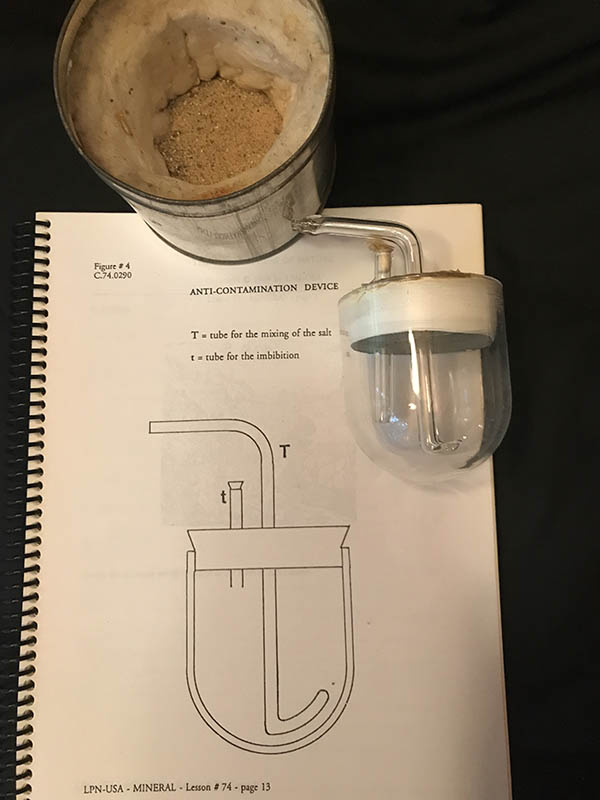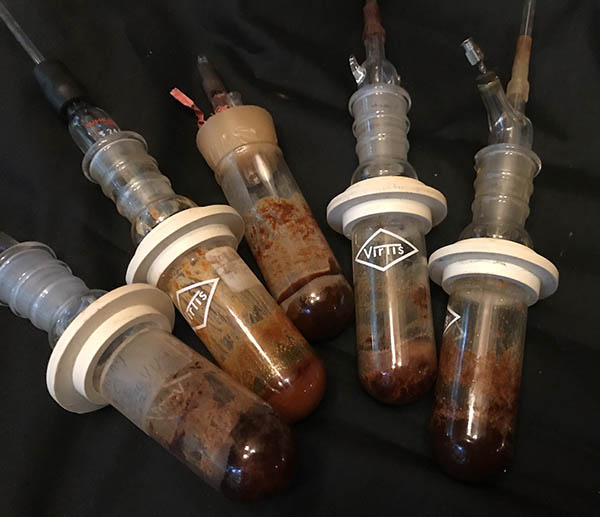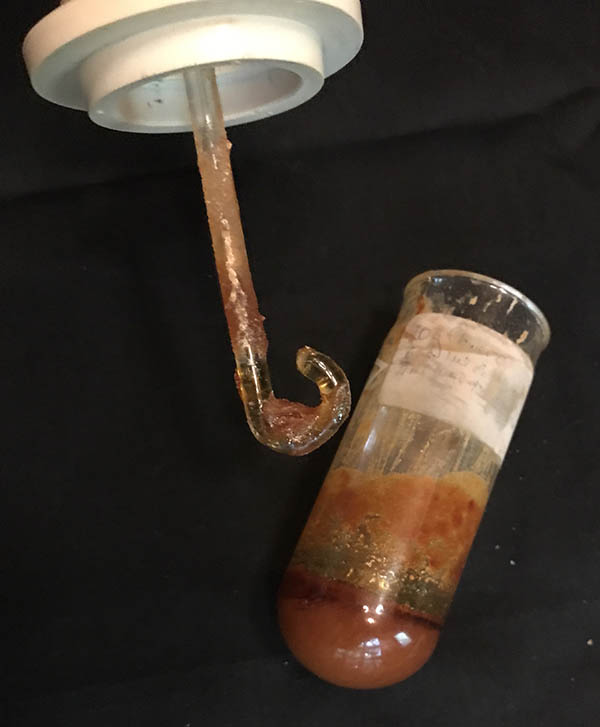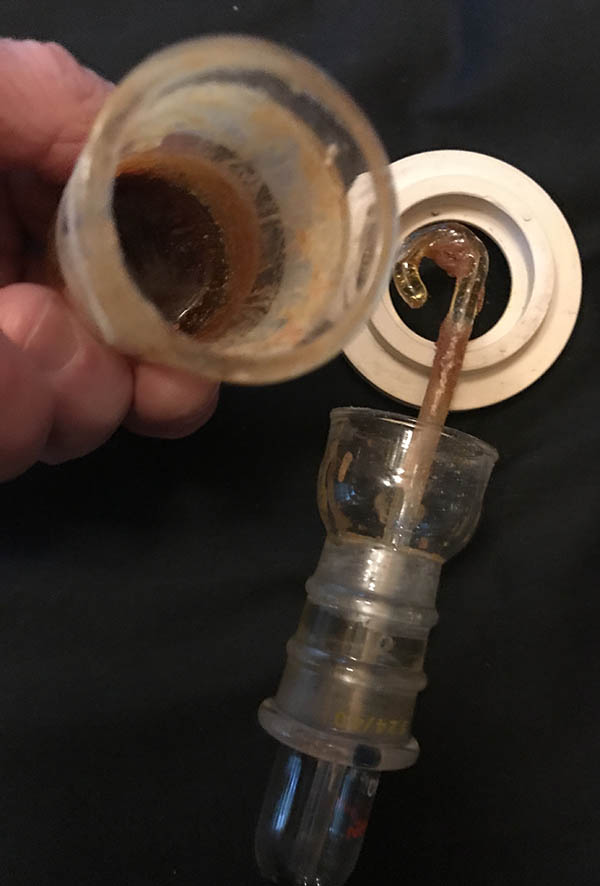plant stone - method by jean bubuis
by Aashiq al-Hikma
Jean Dubuis, founder of Les Philosophes de la Nature (L.P.N.), took up the challenge of revealing previously hidden knowledge and technology, so that more people might work on their evolution. He sought to remove obstacles whether they took the form of false beliefs, unnecessary equipment, or methods requiring more time and attention than is required by Nature.
salt body
Jean had determined that sea salt, having a cubic cystalline structure, could serve as a salt body for plant stones regardless of the planetary ruler of the plant used. A simple vessel could be used to contain the salt, and to allow one to add purified essential oil to the warmed salt, and to stir it, without exposing the mixture to possible contamination.

A container [A gift from Jean; constructed of quartz, O.D. 7 cm, Wall 5 mm, Height 8 cm.] of this type with a small insulated can with sand to keep the matter warm while imbibing with the oil is shown, with Jean's illustration for it (Figure 4, Lesson 74 of the Mineral Alchemy course). At several points in this course, Jean introduces newly-learned information that would ideally have been presented in the already completed Spagyrics Lessons.
These newer developments were, however, introduced in the ongoing program of seminars. In late 1993, soon after after a seminar given by Jean and his associates in the USA, we began working with this method to produce plant stones.

Initially we used the tube at the center of the photo, and later found the other vessels at a surplus outlet. Success is not dependent on using a vessel like any of those shown; one uses what is available. As the temperatures for incubation are 40°C or less, (ideally 37 to 39°C), the any small glass container that can be sealed can work.
The plants used in the image are, left to right: Melissa, Rosemary, Cypress, Caraway, and missing label.
As I had a trusted source [Original Swiss Aromatics, San Raphael, California, https://originalswissaromatics.com] for genuine and authentic essential oils, I did not distill the oils, with the exception of the caraway. The oils used were all nearly clear with a faint tints of yellow or yellow-green; the cypress oil is almost colorless. Nonetheless, each, in combination with white salt has evolved to a redness during incubation.
process
We used 15 g of fleur de sel for each experiment. Sourced from the northern coast of France. During a visit, we observed the grey-colored clay silt which lends color to the salt left after evaporation – hence the name grey salt. The flowers of salt never contact the clay, as they are skimmed by hand from the surface of the evaporation pool as they form and are snowy white. This specialized salt is not required, but a solar-evaporated sea salt without addition should be used.
What is necessary, is the timing of the imbibation with essential oil. For caraway, assigned to Mercury, we would do the initial addition of essential oil on a Wednesday, ideally shortly after sunrise (the first planetary hour), alternately in the 8th hour. The system I used has 'hours' of varying lengths. Today,the calculation is simpler; I use planetaryhours.net [Proper calculation requires that ones location – a city – is entered.] on my phone.
One begins by taking the vessel containing only salt, from the warm incubator, and adds slowly, drop by drop, the essential oil. As with watering a plant, the liquid is soon taken up more slowly, and we proceed carefully so we do not have and excess of liquid above the salt. At this stage we might gently stir the mixture using a glass rod (not with metal, plastic is acceptable). One might initially use 6-7 ml of oil per 15 g of salt, and generally a decreasing amount for each subsequent feeding, 2-4 ml, eventually only several drops, or the stone is the same today as it was last week.


Once the salt shows signs of saturation, the vessel is sealed and returned to the incubator until the following week. Above pictures show a stone of melissa, swith stone material on the stirring rod and showing the darker red line at the top of the mass, suggesting that the mixing has not been well done, or that the top layer has changed during a 30 year absence from the incubator. And so we consider to gently warm the vessel, not above 40°C, to soften it so that we can stir it and return to incubation. It is acceptable to add a few drops of rectified wine spirits if warming alone does not soften it adequately. Even in this state it is adequate for its intended use.
dosage
The dosage is a piece the size of a grain of rice, more or less, preferably taken after dissolved in wine, if one uses it, alternately stirred into a hot tea, or even dissolved under the tongue. The purpose is to further one's own evolution, to allow the Light to enter via a window that is transparent rather than clouded. While the effect can be quite exhilarating, or evoke a devotional state, we know of cases where clumsiness or lack of caution were experienced. We do not suggest offering the stone to others, because the stone is imprinted with your resonance. For others than the person who produced it, however, the effect will be more medicinal and initiatic to a lesser extent, whereas for you it is the other way around.
@nifo@innergarden.org
Inner Garden Foundation
P.O. Box 8520, 3542AD
Utrecht, The Netherlands